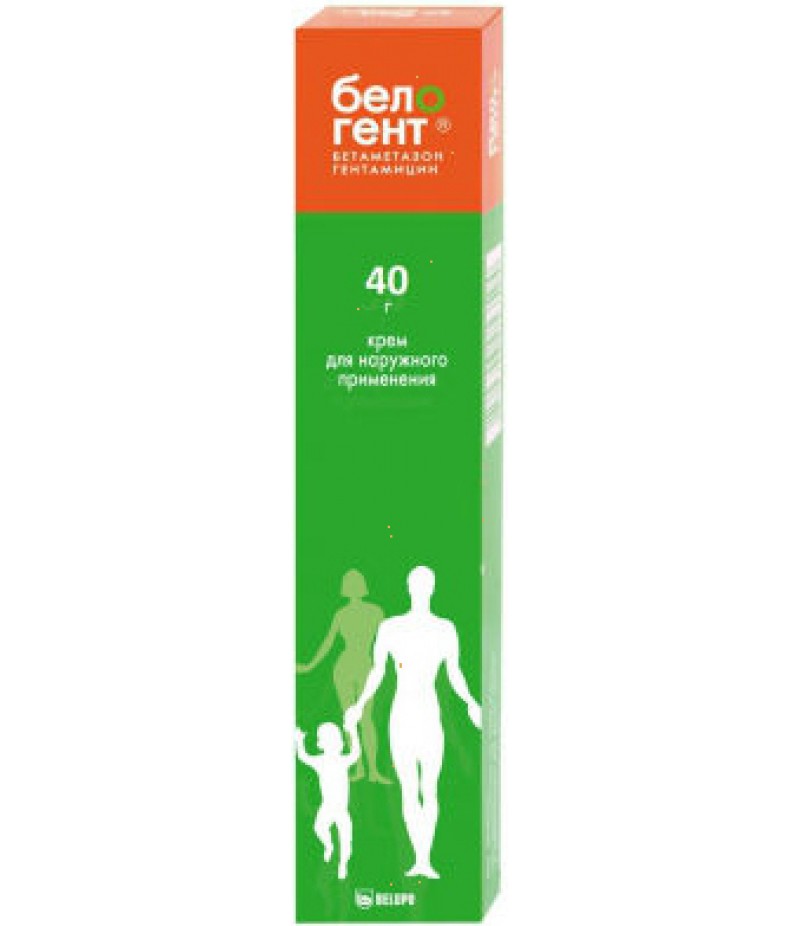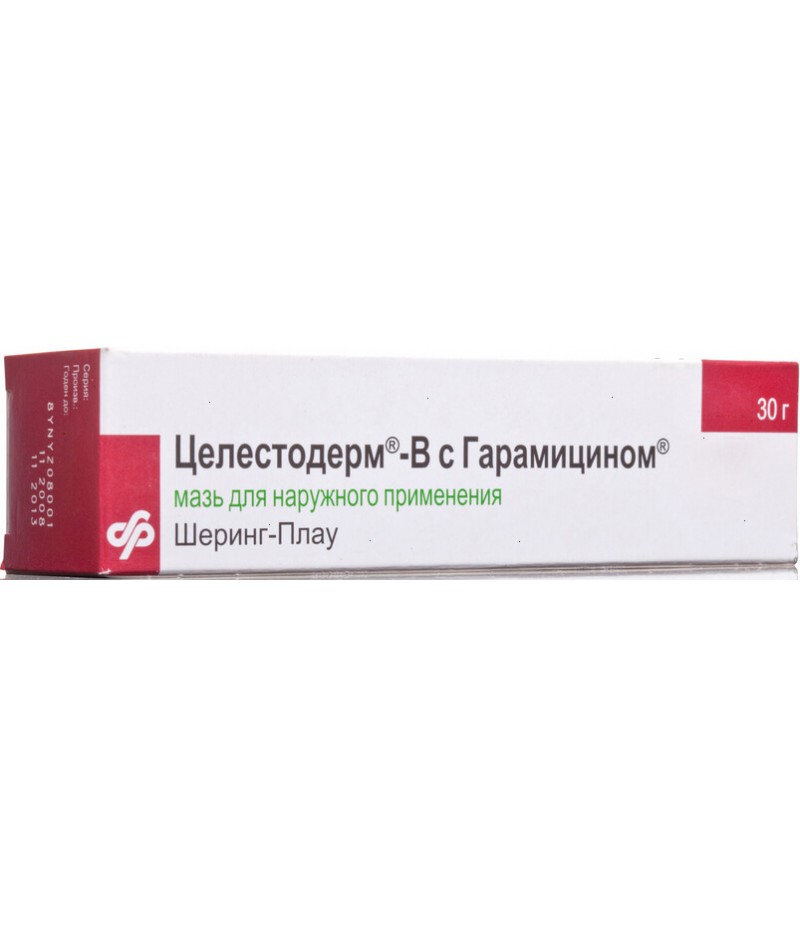Belogent ointment 40gr
- $19.74$22.35
- 3 or more $18.90
- Availability:In Stock
Belogent instruction manualReed more and buy Belogent ointment hereA clinically proven effective combination of a topical corticosteroid and an antibioticBelogent is a combination of gentamycin, an an
Tags: ointment
Belogent instruction manual
Reed more and buy Belogent ointment here
A clinically proven effective combination of a topical corticosteroid and an antibiotic
Belogent is a combination of gentamycin, an antibiotic of a broad spectrum of bactericidal action, and betamethasone dipropionate, a strong and fast acting topical corticosteroid
Two convenient dosage forms: belogent cream and ointment. Allowed for children from 1 year.
Composition: 1 g of ointment contains:
Active substance: betamethasone dipropionate - 0.640 mg in terms of betamemetazone - 0.500 mg and gentamycin sulfate in terms of gentamicin base - 1,000 mg;
Auxiliary substances: paraffin liquid, paraffin soft white.
Description: Semi-transparent homogeneous ointment of white color.
Pharmacotherapeutic group: Glucocorticosteroid for topical application + antibiotic-aminoglycoside
ATX Code D07CC01
Pharmacological properties
Pharmacodynamics
Belogent - anti-inflammatory, anti-allergic, antipruritic, antibacterial.
Betamethasone dipropionate is a synthetic glucocorticosteroid (GCS), which has anti-inflammatory, antiallergic, antipruritic and vasoconstrictive effects. When applied to the skin surface, it narrows the vessels, relieves itching, reduces the release of inflammatory mediators (from eosinophils and mast cells), interleukins 1 and 2, interferon gamma (from lymphocytes and macrophages), inhibits the activity of hyaluronidase and reduces the permeability of the vascular wall. Interacts with specific receptors in the cytoplasm of the cell, stimulates the synthesis of mRNA, inducing the formation of proteins, including lipocortin, mediating cellular effects. Lipocortin depresses phospholipase A2, blocks the release of arachidonic acid and the biosynthesis of endoperoxides, prostaglandins, leukotrienes (contributing to the development of inflammation, allergy and other pathological processes).
Gentamicin is an antibiotic with a broad spectrum of action of the aminoglycoside group.
It has bactericidal action and provides highly effective local treatment of primary and secondary bacterial skin infections. It is active against gram-negative bacteria: Pseudomonas aeruginosa, Aerobacter aerogenes, Escherichia coli, Proteus vulgaris, Klebsiella pneumonia; and Gram-positive bacteria: Streptococcus spp. (sensitive strains of ß and α-hemolytic streptococcus group A), Staphylococcus aureus (coagulase-positive, coagulase-negative strains and some strains producing penicillinase).
Pharmacokinetics
With external use of the drug in therapeutic doses, transdermal absorption of active substances into the blood is very small. The use of occlusive dressings increases the absorption of betamethasone and gentamicin, which can lead to an increased risk of side effects.
Indications for use
Dermatoses, allergic and inflammatory skin diseases, the course of which is complicated by a bacterial infection or there is a risk of its attachment.
Dermatoses with secondary infection or the likelihood of its development: eczema, atopic dermatitis, neurodermatitis, contact dermatitis (including professional), allergic dermatitis, psoriasis, lichen planus, phlebatoderma, anogenital itching.
Infected dermatitis, developed as a result of insect bites, scabies, scratching, abrasions, thermal skin lesions and diaper rash.
Pyoderma of different localization (strepto-staphyloderma, impetigo, sinos, ectima).
Contraindications
Hypersensitivity in patients to betamethasone, gentamicin or to any of the auxiliary components of the drug; viral skin infections, skin post-vaccination reactions, open wounds, trophic ulcers, acne vulgaris, rosacea, chickenpox, cutaneous manifestations of syphilis, skin tuberculosis.
Application in pregnancy and during breastfeeding
Local application of the preparation Beligo® ointment for external use in pregnant women is allowed under the supervision of the attending physician. In such cases, the use of the drug should be short and, if possible, be limited to small areas of skin.
During the period of breastfeeding, the use of the Belogent preparation is possible according to strict indications, but the drug should not be applied to the skin of the breast before feeding.
Use in Pediatrics
Belogent can be given to children from 1 year with caution and for as short a time as possible. Do not use the drug for breastfeeding children under the bandages, and especially for plasticized diapers, as this increases the absorption of the drug and increases the risk of side effects.
Dosing and Administration
For external use only.
Belogent ointment for external application is applied to the affected area with a thin layer in the amount necessary to cover the affected surface, twice a day, lightly rubbing. On sites with denser skin (for example, elbows, palms and feet), as well as places from which the preparation is easily washed, Belogent can be applied more often. The duration of a continuous course of treatment is usually not more than 4 weeks. To prevent relapse in the treatment of chronic diseases, therapy should continue for some time after the disappearance of all symptoms. During the year, repeated therapy is possible.
Side effect
Side effects, as a rule, are mildly expressed. Rarely, as with other glucocorticosteroids, hypersensitivity reactions (itching, burning or redness), acne-like changes, hypopigmentation, striae, skin atrophy, hypertrichosis, and telangiectasia may develop. In case of a hypersensitivity reaction or side effects, therapy should be discontinued and consult a doctor.
Overdose
With prolonged continuous use of the drug, especially in children, on extensive skin surfaces, application to the skin with impaired integrity or when used under an occlusive dressing, it is theoretically possible to develop side effects associated with increased absorption of betamethasone or gentamicin. It should be emphasized that the probability of developing such phenomena is extremely small.
Treatment: it is recommended to cancel the drug and, if necessary, to carry out symptomatic treatment.
Interaction with other medicinal products
Interactions of the drug Belogent with other drugs are unknown.
special instructions
It is not recommended long-term (more than 4 weeks) external application of the preparation Beligo® on the face skin, since it is possible to develop rosacea, perioral dermatitis and acne.
Belogent should not be used in the eye area due to the likelihood of the drug getting on the mucous membrane, which can contribute to the development of cataracts, glaucoma, fungal infections of the eye and exacerbation of herpetic infection.
Some areas of the body, such as axillae, inguinal folds, where there is a kind of natural occlusion, are more prone to the risk of streaking, so the continuous use of ointment for external use in these areas of the skin should be short (no more than 4 weeks).
In cases of development of fungal microflora on the skin, an additional use of an antifungal agent is necessary.
Impact on the ability to manage vehicles and mechanisms
Data on the adverse effects of the preparation Beligo® ointments for external use on the ability to drive vehicles and mechanisms are not available.
Storage conditions
At a temperature of no higher than 25 ° C.
Keep out of the reach of children!
Shelf life
4 years.
Do not use after the expiration date.
Leave conditions
Without recipe.




